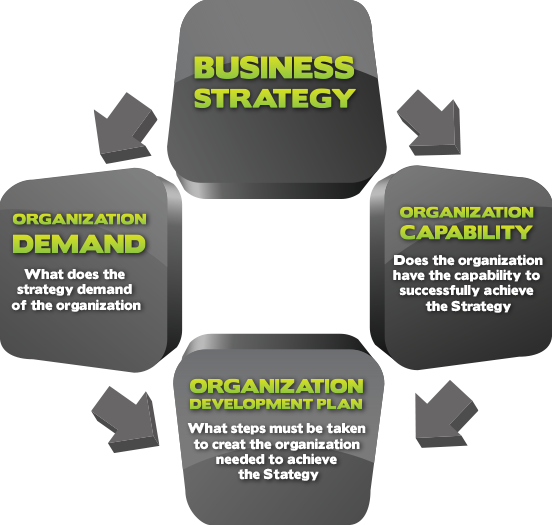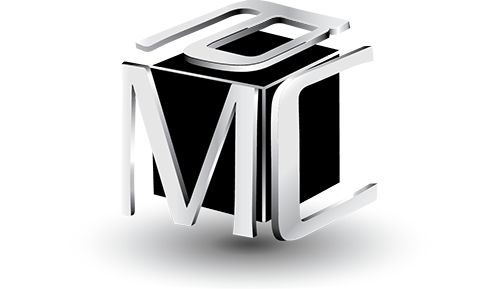Building a Strategy-Driven Organization
If you don’t get the talent right, your business will never fulfill its strategic potential.
The single biggest factor in the sustained health of a business is having the right people in the roles that generate wealth for the business and value for customers.

Business Strategy: From Strategy, All Things Grow
Strategy typically answers the basic questions:
- What kind of business are we?
- How and where will we grow?
- How will we compete? and,
- What capabilities do we need to support this kind of business?
The choices made while answering these questions set the stage for the type, mix, and structure of talent needed for success. To get talent right, the process used to create strategy must be right. The key to a robust strategy lies in a well-designed process that maximizes innovation, speed, decision-making effectiveness, and accountability.
Learn More >Organization Demand: Competing Through People™
After the strategy is in place, the next step is to assess the demand that strategy places on the organization. The organization demand can be described in terms of structure, critical competencies, required culture and strategic roles. Of all these, identifying strategic roles is the most critical.
Strategic positions have a direct impact on business success. They generate wealth for the firm and value for customers. They are usually a small percentage of your total jobs and require talent that is often a rare commodity in the labor market. A significant additional investment in this talent will have a clear return for the business.
The knowledge required in these roles is critical to retain. These are the seats on the bus that must contain your best talent and have a line of capable passengers (already on the bus) ready to take the seat if vacated.
Organization Capability: People Are NOT Your Most Important Asset
“People are your most important asset”. We hear it from every pundit and HR consultant. However, if you look at data on how the marketplace values a business, “people” doesn’t make the list. More and more, intangibles are driving the valuation of a company. The three most important intangibles: Customer Base, Brand or Image, and Intellectual Property (think Google).
Wait a minute . . . aren’t people the asset that create those intangibles! That’s right, but it’s not just anyone or all your people. The more precise mantra would be “The RIGHT people in the RIGHT roles doing the RIGHT things are your most important asset”.
The right people are those that have demonstrated that they 1) are learning agile and have growth potential or, 2) have mission critical knowledge or relationships.
- Where are your “right” people? How do you identify them? Are they deployed effectively?
- Are pivotal positions effectively backed-up?
- Where are the talent risks?
- What will our talent look like in the future?
Organization Development
This is the stage in the model where we develop detailed actions to address the gaps between strategic demands and the capability of your talent. The result is a step-by-step roadmap to increasing the strategic capability of your company.
The real value from the talent roadmap doesn’t come from just creating capability but from sustaining the organization’s capability over time. Hiring, firing and training alone are not sufficient. Advances in HR and information technology have given us some interesting new tools. The requirements of the present business climate make them necessary additions to the talent tool box.
Learn More >Summary
From strategy, to talent capability, to organization development, Strategy-Driven Organization Developmentsm provides a perspective on how to build a strategy-focused organization – a way to get talent right and to compete through people.


